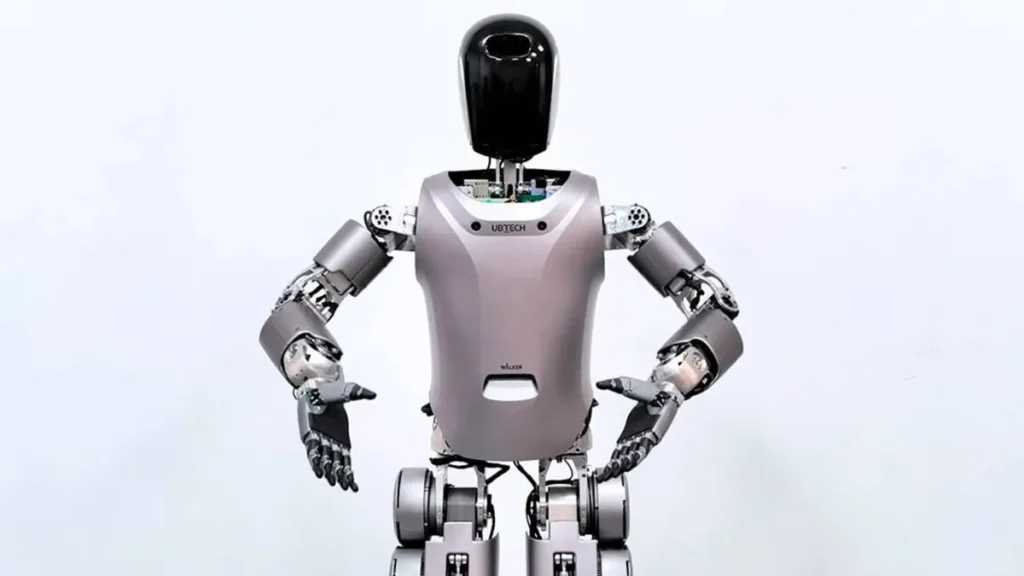The World Robot Conference, held in Beijing, highlighted significant advances in the development of humanoid robots and innovations in the sector. China, one of the global leaders in robotics technology, showcased more affordable and innovative components, presenting a promising outlook for the future of robotics. However, despite these advancements, product reliability remains a pressing challenge that the sector must address.
During the event, Wisson Technology drew attention with its innovative solutions in robotics. Known for its flexible robotic manipulators, the company stands out by not relying on traditional motors and reducers — widely used transmission devices in conventional robotics. Instead, Wisson uses 3D-printed plastics and pneumatic artificial muscles, which provide greater flexibility and efficiency for its robots.

Despite these innovations, the issue of reliability persists as a significant obstacle. Industry executives warn that, for humanoid robots to become a common presence in domestic and industrial settings, it is essential to resolve problems related to durability and consistent performance. These challenges are crucial to ensuring that robots can operate safely and efficiently in a variety of applications.
The conference in Beijing also served as a meeting point for experts, investors, and developers to exchange ideas and discuss future directions for robotics. The need to enhance product reliability was a recurring theme, reflecting the consensus that, despite technological advances, trust in humanoid robots’ performance must be solidified for the sector to reach its full potential.
The World Robot Conference, held in Beijing, marked a pivotal moment for the robotics industry, emphasizing technological advancements and innovative solutions shaping the future of humanoid robots. China, a leader in developing these technologies, introduced new, more affordable, and advanced components, though the sector still faces significant challenges, particularly regarding product reliability.
Wisson Technology, known for its flexible robotic manipulators, is at the forefront of this innovation. The company has significantly reduced the production cost of its robotic arms by utilizing 3D-printed plastics and pneumatic artificial muscles instead of traditional motors and reducers. This approach has enabled Wisson’s flexible arms to cost approximately one-tenth of conventional robotic arms. According to Cao Wei, an investor in Wisson and a partner at Lanchi Ventures, a venture capital firm, Wisson’s innovative technology will allow its robotic arms to be marketed at a cost of around 10,000 yuan (approximately $1,400 USD).
Wisson’s flexible arms have the potential to be applied in humanoid robots, with the company already supplying samples to foreign manufacturers developing these advanced robots. “Wisson’s flexible arms can be used in humanoids,” said Cao Wei, highlighting the importance of the company’s innovations for advancing robotic technology.
However, the robotics sector still faces substantial challenges. Yi Gang, founder of Ti5 Robot, a Shanghai-based company specializing in integrated joints, raised concerns about the robotics supply chain. He emphasized that “the entire supply chain still needs to address product reliability issues.” Yi added that, due to defect rates, his company can only manufacture products in volumes of up to 1,000 units. This reliability challenge is a critical obstacle to the industry’s expansion and broader adoption of humanoid robots in the global market.
The Beijing conference not only celebrated emerging innovations but also served as a vital forum to discuss the paths forward in overcoming technical challenges and ensuring humanoid robots can be reliably and effectively used in a variety of applications.
The World Robot Conference, held in Beijing, highlighted significant advancements in the robotics sector but also brought to light fundamental challenges that must be overcome. China, recognized as a global leader in robotics technology, has invested heavily to remain at the forefront of the field. However, product reliability and technological refinement remain central issues.
One of the most relevant discussion topics was the harmonic drive, a crucial component for precise robot motion control. This technology, vital for robotic systems’ operations, has presented technical challenges that need to be resolved to improve robots’ efficiency and reliability.
China’s push to advance robotics is strongly supported by President Xi Jinping’s policy to develop “new productive forces” in technology. This strategy aligns with the vision of transforming China into a global leader in technological innovation. During the event, government support was evident in distributed brochures emphasizing robotics’ importance to the country’s economic and technological future.
China, as the world’s largest market for industrial robots, is undergoing a significant transformation in traditional sectors like manufacturing, automotive, agriculture, education, healthcare, and domestic services. Robotics technology is increasingly integrated into various fields, bringing substantial changes to how these sectors operate and interact with technology.
Gao Jiyang, former president of the autonomous driving startup Momenta and founder of Galaxea AI, a startup focused on robotics hardware and artificial intelligence, highlighted how advances in autonomous driving are driving robotics development. “Autonomous driving means cars with AI, which are also a type of robot,” Gao noted, emphasizing the convergence between intelligent vehicles and robotics.
Closing the conference on Sunday (August 25), China’s Premier Li Qiang underlined the importance of implementing Xi Jinping’s guidelines for the robotics sector. “The robotics sector has broad prospects and enormous market potential,” Li declared, according to China’s official Xinhua news agency. He described robots as an “important parameter for technical innovation and high-end manufacturing strength” and emphasized the need to maintain supply chain stability and advance on the international stage.
Li also called for efforts to promote the expansion and popularization of robots in various fields, such as industry, agriculture, and services, reinforcing a vision of a future where robotics plays a crucial role in modernizing and innovating different sectors of the economy.

